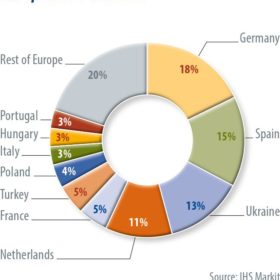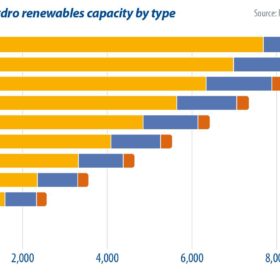Broken promises: Legal recourse for retroactive FIT cuts
Generous feed-in tariffs, a short-lived boom and retroactive cuts – the early stages of large-scale solar deployment in Europe followed a regrettable pattern. Project developers have increasingly turned to the legal system for restitution, and many have been successful, writes Daniel R. Meagher, a partner in Winston & Strawn’s international arbitration practice.
Transitioning to larger wafers
Since 2017, 156.75 mm M2 wafers have been the standard. However, improvements in cell efficiency appear to have hit a bottleneck, making wafer size a hot topic among manufacturers once again. In the second half of 2018, 158.75 mm G1 mono wafers were introduced to the market. Corrine Lin of PVInfoLink argues that while G1 will likely become the mainstream format over the next two years, 166 mm M6 wafers and 210 mm M12 wafers are presenting new options for manufacturers.
Harmful lead in photovoltaics – are there sustainable alternatives?
Without globally unified standards in waste management, the risk from toxic materials such as lead will become increasingly important.
A new era of sustained growth
After several years of weak solar demand growth in Europe, compared to the historical highs of 2011, installations are expected to surge by 88% to reach a new installation record of 23 GW in 2019, writes Cormac Gilligan, research manager at IHS Markit. A range of favorable macro conditions have coalesced this year to reignite the market.
Why Europe and the US failed to capitalize on thin film solar
Is First Solar stalled in innovation and growth? Markus Beck, a thin-film solar expert and former chief technologist at First Solar, provides an industry perspective on the fate of thin-film PV in the United States.
12 GW bifacial demand in 2020
Back in June, the Office of the U.S. Trade Representative (USTR) granted Section 201 tariff exemptions to bifacial cells and modules, but reversed the decision on Oct. 28. Two weeks after the reversal, the U.S. Court of International Trade issued a temporary order against the withdrawal of the bifacial exemption. An investigation is now underway, with the first hearing taking place on Dec. 5.
China’s market in transition
By the end of 2018, China was home to around one third of global cumulative PV capacity, with around 175 GW of operational PV systems. In the context of China’s power sector, writes Frank Haugwitz of Asia Europe Clean Energy Advisory, the cumulative installed capacity makes up 9% of the total existing power generation capacity and contributed approximately 2.7% to total electricity generation.
Never a dull moment in the US-solar market
With its trade wars, exclusions from tariffs, reversals of exclusions, and stays of reversals of exclusions – in addition to the repeal of the Clean Air Act and potential changes to the Public Utility Regulatory Policies Act – the U.S. solar market is anything but boring, writes SPV Market Research’s Paula Mints.
European Green Deal promises better products – and ecodesign shows the way to making it happen
The European Green Deal needs better and longer-lasting products, and that includes solar panels, says ECOS, the environmental NGO specialising in ecodesign and standardisation.
Vietnam’s solar opportunities shine bright
The outlook for growth in Vietnam’s renewables sector is positive, writes Daine Loh, research analyst at Fitch Solutions. And the solar segment is one of the key drivers of this impressive growth. Vietnam still has substantial untapped solar power potential. Coupled with an increasingly supportive regulatory environment, and an expected surge in electricity consumption over the next decade, the country’s renewables sector is poised for a new dawn. And this will bring substantial opportunities for investors.









